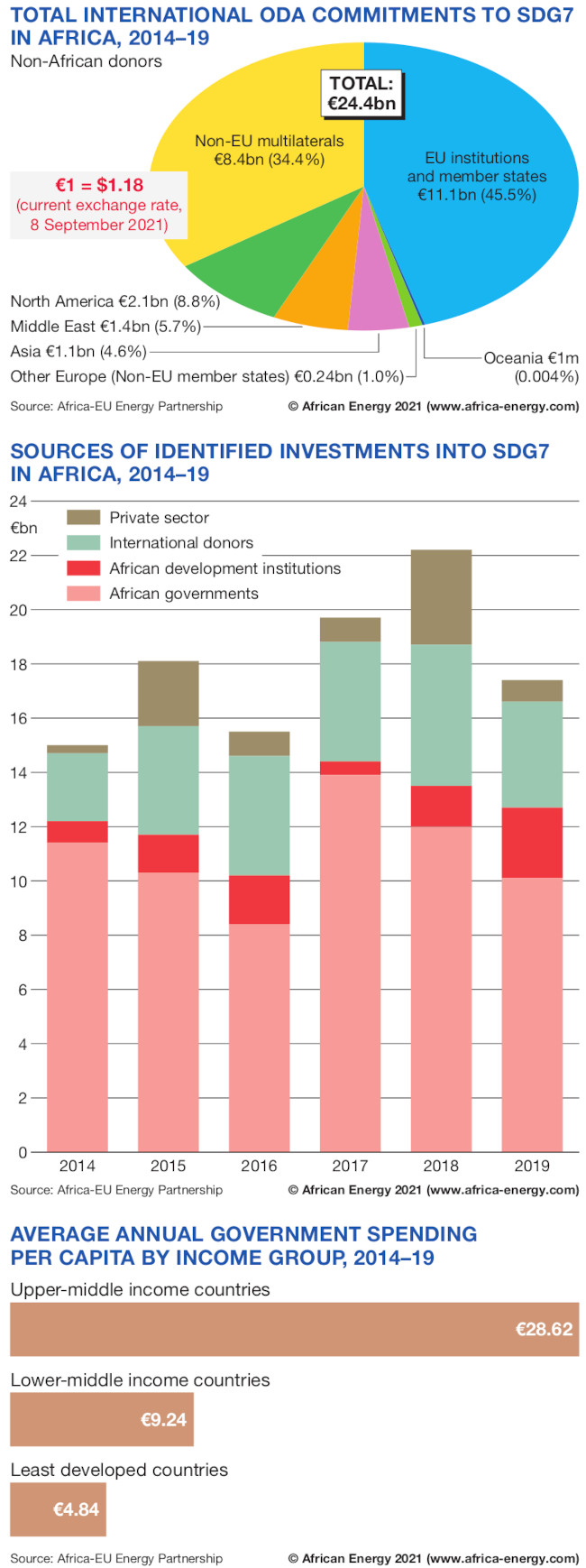

1 September 2021
A new report commissioned by the Africa-EU Energy Partnership (AEEP) and produced by Cross-border Information (CbI)’s African Energy consultancy team has found that significant progress has been made towards reaching the United Nations’ Sustainable Development Goal 7 (SDG7) in Africa, but that significantly more needs to be done if this important goal is to be achieved.
The European Financial Flows on SDG7 to Africa report identified some €108bn of investments into the continent’s energy sector between 2014 and 2019, of which €24.4bn was directed towards SDG7-compliant projects in the form of official development assistance (ODA).

African Governments and development institutions have borne the primary responsibility for energy investments and are responsible for investing some €66.2bn over the period. The report also finds that Europe is the world leader in SDG7-compliant energy investment in Africa, with aggregated data showing that EU Institutions and Member States have committed €11.1bn in ODA during the period under investigation – equal to 46% of all energy ODA investments in the continent.
Despite this progress, an average funding gap of €69bn per year remains, a figure which while substantial, can be leveraged. Merely avoiding the economic losses from electricity outages in Africa would free up the funds required to provide access to sustainable energy services to all of Africa´s citizens. Expressed differently, the additional funding requirement is only 3.1% of African GDP and a mere 0.5% of European GDP.
The report finds that profound intent exists with African governments, European partners and other key international players to reach the SDG7 goal by 2030. However, to ensure access to affordable, reliable, sustainable and modern energy for all, ODA spending and private investments may need to increase by 27% per year over this decade, along with a substantial increase in national government spending.
Launching the report, AEEP head of secretariat Johan van den Berg said “As the analysis of financial flows in our report shows, achieving SDG7 in Africa lies within reach. Africa and Europe are leading the way – both globally and through their unique partnership. We now need to deploy our full strength, technologies, financing and innovation to make it happen. Because the cost of inaction is far greater.”
The report concludes that inaction is expensive: power outages alone are estimated to cost sub-Saharan Africa more than 2% of GDP per year. Therefore, if Africa does not achieve the SDG7 targets, the long-term economic losses arising from a lack of electricity access risk being equal or even greater to the funding requirement.
The AEEP’s European Financial Flows on SDG7 to Africa report will be followed by a 2022 edition helping to inform the next phase of joint action on energy in the lead-up to the Sixth African Union-European Union Summit.
Download the full report at: sdg7.africa-eu-energy-partnership.org
Africa-EU Energy Partnership
Maximilian Heil, Communications Advisor, Secretariat of the Africa-EU Energy Partnership
E: [email protected]|
T: +49 228 4460 3983
African Energy
Jon Marks
Founder
[email protected]
+44 1424 721667